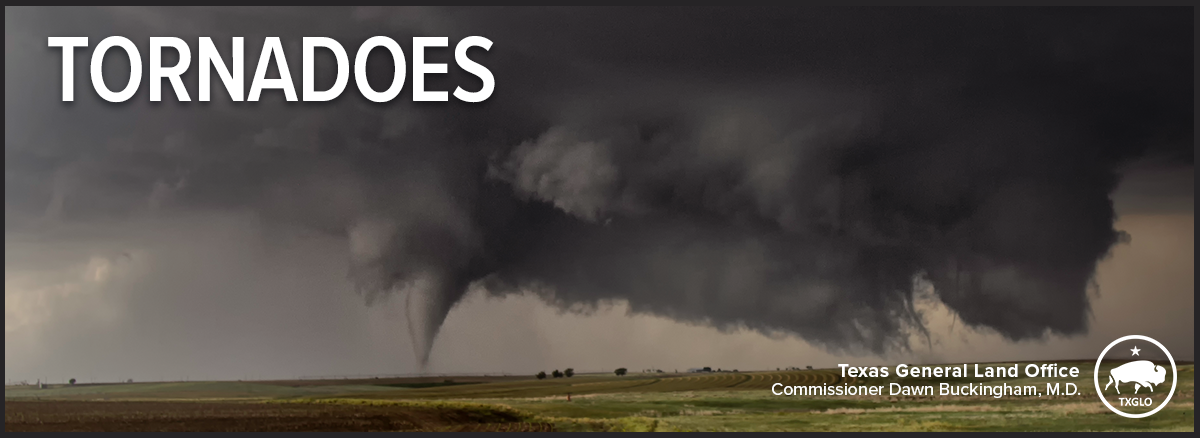Tornado Preparedness
Tornadoes are fairly common in Texas. A tornado can strike very quickly with little warning. It’s important to know what to do if a tornado threatens your community so you can take quick protective action.
Know the Difference: Watch, Warning and Emergency
- Tornado Watch - Conditions favor the development of tornadoes. Stay alert, be ready to act should a tornado threaten. Watch the sky and have a way to receive warnings (smart phone apps, NOAA Weather Radio, commercial radio or television).
- Tornado Warning - A tornado has been sighted or indicated by weather radar. Take shelter immediately if in the warned area.
- Tornado Emergency - Issued in exceedingly rare circumstances when there is a severe threat to human life and/or catastrophic damage is imminent or ongoing and reliable sources confirm a tornado.
- Sign up for your community’s warning system. The Emergency Alert System (EAS) and National Oceanic and Atmospheric Administration (NOAA) Weather Radio also provide emergency alerts. If your community has sirens, become familiar with the warning tone. Pay attention to weather reports. Meteorologists can predict when conditions might be right for a tornado.
What to Do in a Tornado Warning
- If you are in a building, go to the center of a small interior room or interior hallway on the lowest level, away from windows, doors, and outside walls. Put as many walls as possible between you and the outside. Avoid large rooms with large span roofs (gymnasiums, cafeterias). If in a high-rise building, go to a small interior room or hallway on the lowest floor possible away from windows.
- If you are in a manufactured or mobile home, get out immediately and go to the lowest floor of a pre-identified nearby building or storm shelter. Mobile homes, even if tied down, offer little protection from tornadoes. It is important to identify a sturdy shelter you can get to quickly as part of your severe weather plan.
- If you are caught outside with no shelter, make every effort to get to a safe shelter. If this is not possible, your best course of action is to lie in a low spot or ditch and cover your head with your hands. It is not advisable to get under a bridge or overpass.
After a Tornado
- If you are trapped, cover your mouth with a cloth or mask to avoid breathing dust. Try to send a text, bang on a pipe or wall, or use a whistle instead of shouting.
- Stay clear of fallen power lines or broken utility poles.
- Do not enter damaged buildings until you are told that they are safe.
- Save your phone calls for emergencies. Phone systems are often down or busy after a disaster. Use text messaging or social media to communicate with family and friends.
- Be careful during clean-up. Wear thick-soled shoes, long pants, and work gloves.

